WorkBC Assistive Technology Services Helps Liam Train for a New Career

Liam is currently obtaining work experience and looking for employment in the communications sector, while undergoing career training. He was motivated to switch careers because of an injury.
“I have a severe neck injury which makes getting to and from places very difficult, I am re-training so that I can find work from home or hybrid positions,” he shares.
WorkBC Assistive Technology Services Puts Tom on the Path to Employment

Tom is currently looking for work. He has Central Sensitization Syndrome and widespread chronic pain, making it difficult for him to work.
“It severely limits the amount of time I am able to spend up and about, including time spent sitting at a desk. Since 2021, I have been unable to work because of my condition,” he explains.
WorkBC Assistive Technology Services Makes Dawn’s Workday Much More Comfortable

Dawn is a bookkeeper, having worked for the same employer for 15 years. She has Inclusion Body Myositis, an inflammatory muscle disease. She is losing the grip strength in her hands, has weakness in her legs, and has significant fatigue. This makes her job much harder, particularly because it involves a lot of typing, and affects her ability to get to and from work.
After learning about WorkBC Assistive Technology Services online, Dawn decided to apply for help. She received an ergonomic and assistive technology assessment to find assistive technology solutions to help her both in the office and to allow her to work from home.
WorkBC Assistive Technology Services Helps Leanne Work Longer Hours With Less Pain
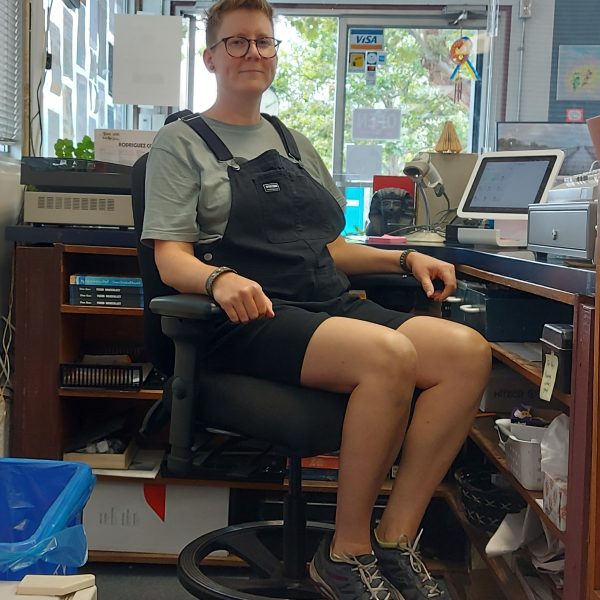
Leanne works as a manager at a bookstore in the BC Interior. Her job involves taking care of the organization and upkeep of the store, customer service and sales, as well as stocking books.
“I have chronic pain, especially back pain, which makes it difficult for me to be on my feet for long periods, perform repetitive tasks, and bend and lift,” she shares.
“I Feel That I Can Give More of My Time and Energy”

Kari works with a non-profit drop-in resource centre in Vernon that helps people find and understand health services and supports. She runs a monthly chronic pain group for the non-profit, and she also manages their social media and website.
“I do quite a bit of work on the computer, and this has brought great pain to my neck and shoulder area as I have degenerative disc disorder, osteoarthritis, and psoriatic arthritis, along with fibromyalgia, chronic fatigue, and chronic migraines. This makes it very difficult to work for any length of time as I am in so much pain,” she shares.
“I also carry supplies needed for my monthly chronic pain groups and have had to find ways to carry these in an easier filing system with wheels as I just don’t have the strength to carry it from the street into the venue.”
“I’m Excited About What My Future May Hold”
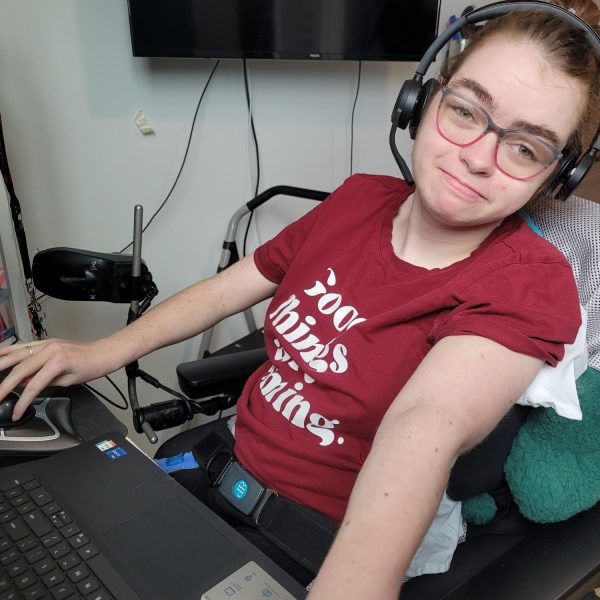
WorkBC Assistive Technology Services has been helping Hailey get the assistive technology she needs as she works to find employment. Hailey has cerebral palsy, which makes her speech soft and she uses a power wheelchair.
“I have many physical barriers that challenge me daily and make finding employment very difficult,” she shares.
Hailey was working with her employment counsellor at NEXUS Community Support Society when they reached out to WorkBC, who referred her to WorkBC Assistive Technology Services. A WorkBC Assistive Technology Services occupational therapist came to Cranbrook to provide an assistive technology and ergonomic assessment.
WorkBC Assistive Technology Services Helps Trina Maintain Full-Time Employment
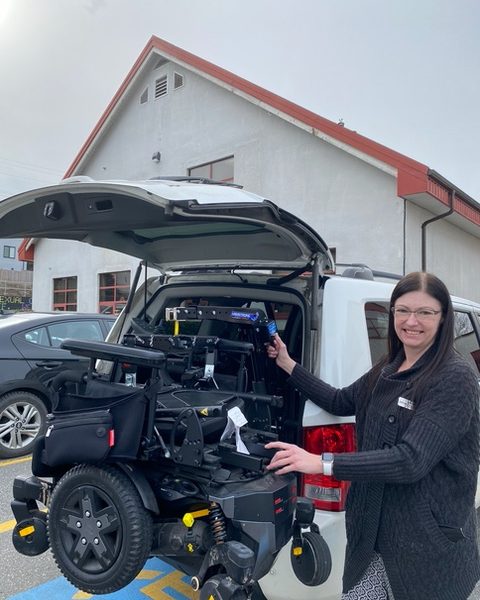
Trina works with seniors for a community service organization, helping them connect with community supports and services, as well as providing practical supports to older adults and their families.
She has Mixed-Connective Tissue Disease, which has many of the features and symptoms of lupus, arthritis, and various other conditions.
“This limits my ability to sit on non-supportive chairs and at non-ergonomic workstations; walk or stand for long periods; and write legibly and type quickly. Therefore, it necessitates the use of adaptive equipment for many workplace tasks,” she says.
WorkBC Assistive Technology Services Gives Darren the Confidence for His Job Search
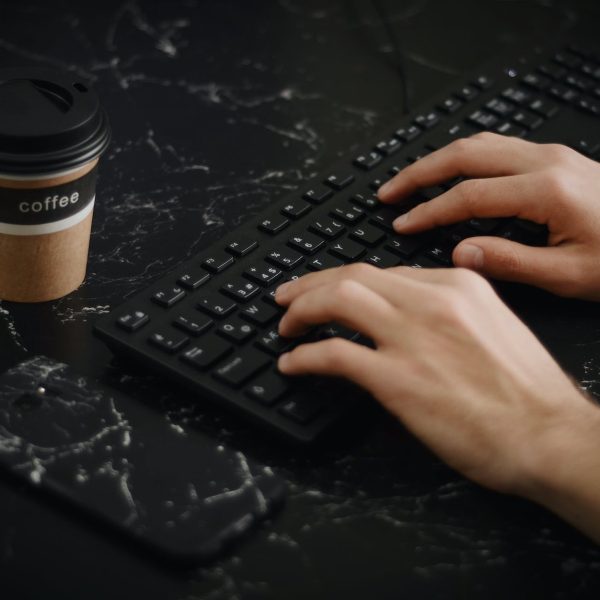
Darren is currently looking for employment, while also taking courses to enhance his skills.
He has a C3 spinal cord injury, as well as arthritis, which led to him leaving a previously successful career due to the pain.
“[It] severely limits the types of work that are available to me,” he shares.
Ergonomic Supports Help Michelle Open Her Own Business
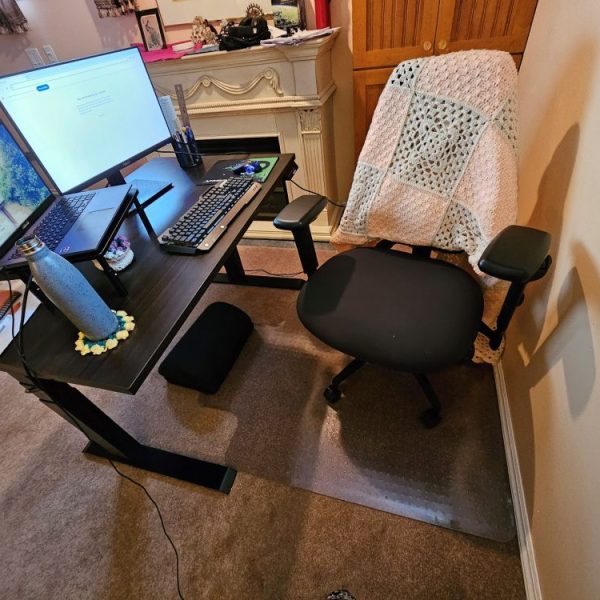
Michelle is opening her own business in February, something she’s able to do thanks to equipment she received from WorkBC Assistive Technology Services.
“Without this equipment, this wouldn’t be possible for me,” she says.
“I have osteoarthritis and no cartilage in my knees which limits my mobility and the length of time I can sit without severe pain and inflammation in my legs. At my last job, I was required to sit at a desk for extended periods of time and would often end up with swollen legs and my knees would buckle when standing up.”
WorkBC Assistive Technology Services Helps Zhu Work His Way Towards Employment

Zhu is currently taking online English courses to improve his command of the language as he looks for bookkeeping work.
He has Spinocerebellar ataxia type 3 (SCA3), a condition that makes it difficult for him to put in the time to study and work towards employment.
“I often lose my balance, and easily fall down. I suffer from back pain, can’t sit down long time,” he explains. “It is better for me to stand a while.”



